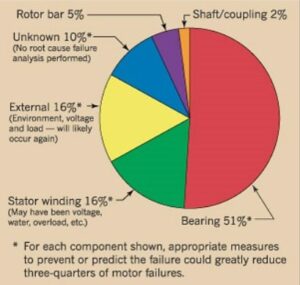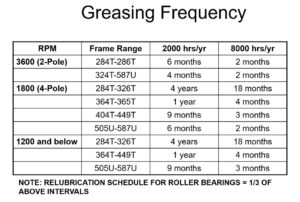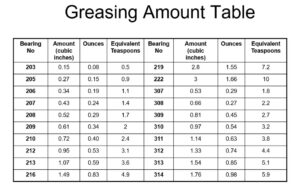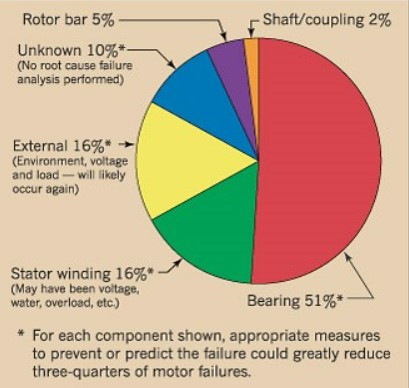Greasing Electric Motor Ball Bearings
July 8, 2016
Before reading this article, please first read our article on Ball Bearing types and options. That is the first article in this series of articles on electric motor ball bearings. This article is focusing on some factors to consider when greasing ball bearing motors. There is a variety of useful information in this article, but please be sure to check with the manufacturer of the motor on their recommended greasing frequency, amount of grease, and type of lubricant to use. This article is speaking in generic terms and utilizing “rules of thumb” on greasing bearing in electric motors. This is for educational purposes only, you should check with the manufacturer of your motor before implementing any form of a electric motor greasing program.

Why should you grease electric motor ball bearings?
- Bearings are the major cause for motor failure.
- Anti-friction bearings are designed and selected for application so that they will provide a certain life.
- L-10 Life typically 100,000 hours or greater for direct coupled duty
- L-10 Life typically 40,000 hours or greater for belted duty (pulley)
- One bearing manufacturer study indicates that 95% of bearing failures can be classified as premature.
- Factors related to lubrication account for many of these premature failures
Considerations for greasing:
- Ensure the bearings are greaseable
- Verify the relubrication interval (see chart below)
- Ensure greases are compatible (see chart below)
- Verify the amount of grease required (see chart below)
- Lock Out/Tag Out Motor?



At HECO, we want our customers and clients to be well educated in their options. Bearings can be a major point of failure and frustration for end-users when the correct bearing is not used. That is the main reason we continue to as “Why?” when a motor is requested to be picked-up for repair. We want to know the information required to repair it the right way, the first time.
Posted in Equipment Management
